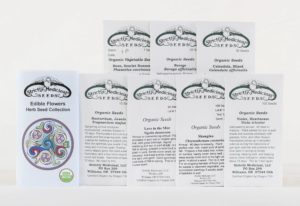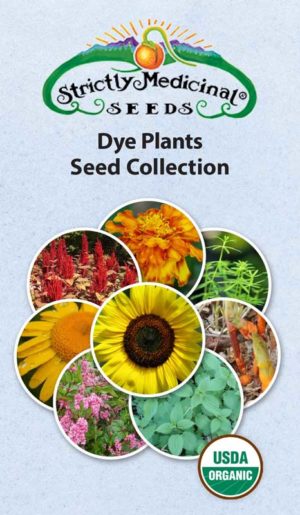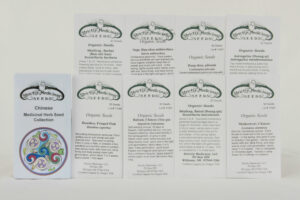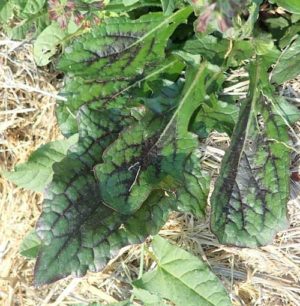Sage Set (7 seed packets): Clary, Dan Shen (S. miltiorrhiza), Garden, Pannonian, Scarlet, Purple & White [WA NO]
$22.90
Family: Mint (Lamiaceae)
Set contains one full-sized packet each of sages: Black, Clary, Dan-shen miltiorrhiza, Garden, Purple, Scarlet and White. If you are wondering what “full-size packet” means, you can check the seed packets where they are sold individually on this website–they are the same as in the set–the set gives you a substantial price discount over buying the packets individually.
Scarlet is a 90 day summer annual. Garden is perennial and Clary is biennial, both hardy to Zones 5-9. Pannonian, Dan-shen, Purple and White are hardy to zones 9 to 12.
This is a cross-section of the great variety of Sage species available worldwide. Planting in a sunny, dry and well-drained microsite will help assure survival through the winter. These sages all prefer fast-draining soil in the full sun to part shade. The seeds are best sown in the spring, barely under the surface, well tamped, and kept warm and evenly moist until germination, which takes about a week. Each packet contains the individual microsite preferences for the species as well as more specific germination and planting advice. Enjoy your sages!
Price shown is a discount.
7 full-sized seed packets, Open pollinated, Untreated, NO GMO’s. Not available to the state of Washington.
In stock

![Sage Set (7 seed packets): Clary, Dan Shen (S. miltiorrhiza), Garden, Pannonian, Scarlet, Purple & White [WA NO]](https://strictlymedicinalseeds.com/wp-content/uploads/2016/11/Sage-scaled.jpg)
![Sage Set (7 seed packets): Clary, Dan Shen (S. miltiorrhiza), Garden, Pannonian, Scarlet, Purple & White [WA NO] - Image 2](https://strictlymedicinalseeds.com/wp-content/uploads/2020/07/Gallo_cresta_500.jpg)





What others are saying
There are no contributions yet.